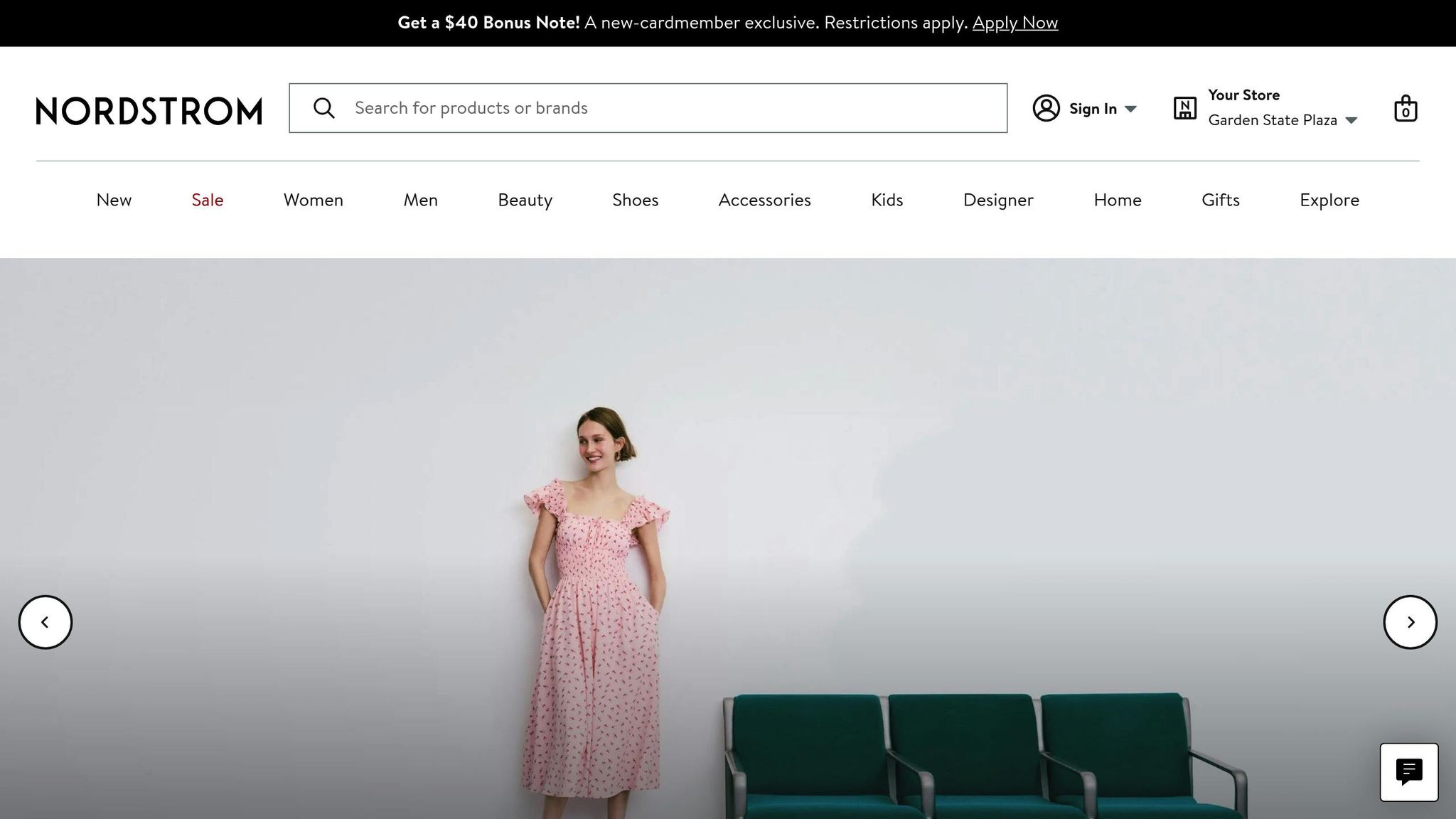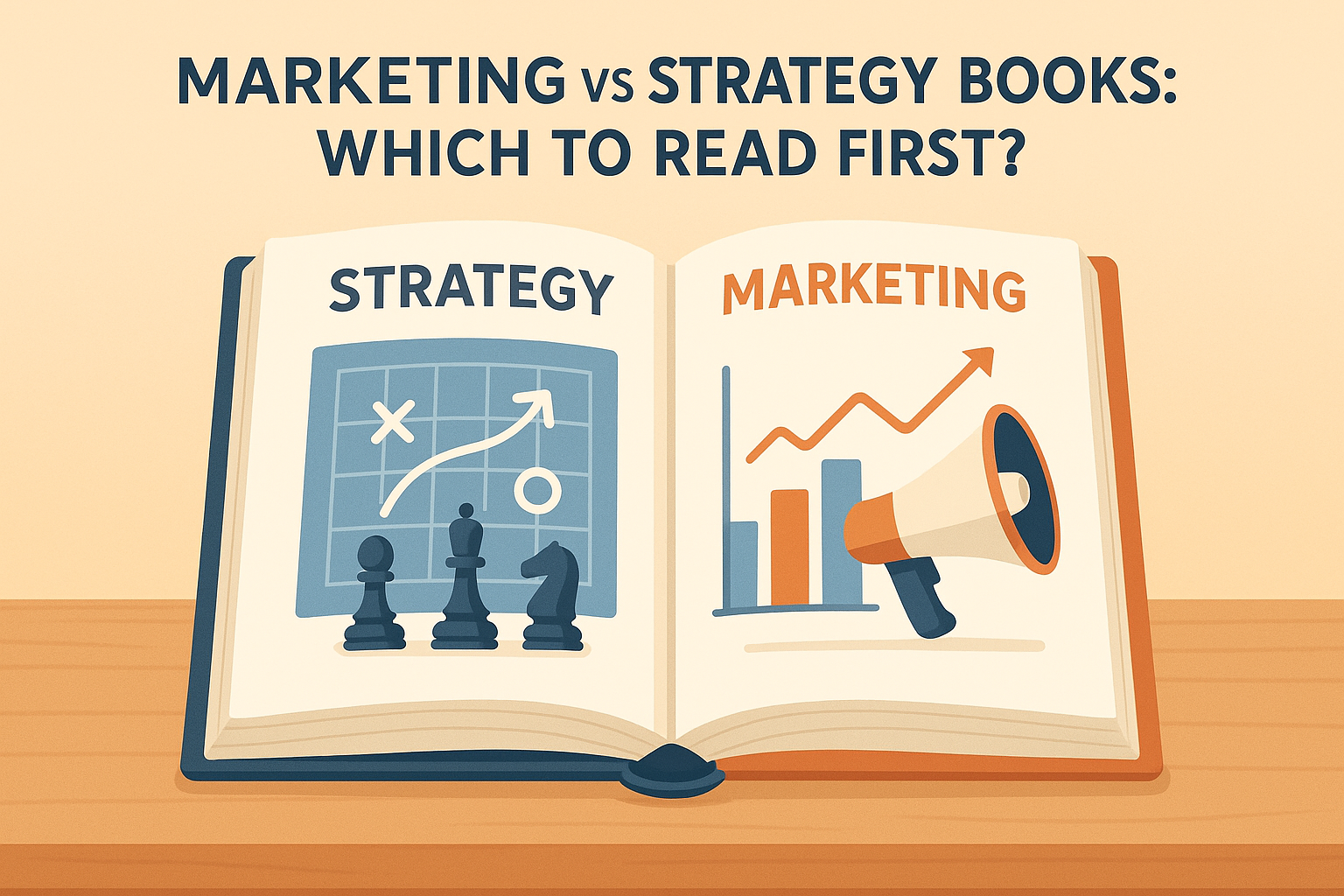Creating memorable customer experiences is essential for business success. Customer journey mapping helps businesses improve customer retention, reduce costs, and increase revenue. This guide highlights 7 must-read books that offer actionable strategies, frameworks, and tools to master customer journey mapping.
Key Takeaways:
- Effective journey mapping improves retention by 50%, reduces service costs by 15-20%, and boosts revenue through cross-selling by 56%.
- Examples like Nordstrom’s loyalty program and Sephora’s personalization show how mapping drives results.
- These books cover everything from practical tools and emotional insights to case studies and industry-specific examples.
The 7 Books:
- Mapping Experiences by Jim Kalbach: Frameworks for creating actionable maps.
- The Journey Mapping Playbook by Jerry Angrave: Practical steps for preparation and facilitation.
- CX That Sings: Industry-specific examples and tools for omnichannel strategies.
- The Effortless Experience: Focus on reducing customer effort to build loyalty.
- Customer Journey Mapping: A Field Guide by Chantel Botha: Emotional insights and structured frameworks.
- Outside In by Harley Manning and Kerry Bodine: Six disciplines for a customer-centered business.
- The Nordstrom Way: A case study on embedding a customer-first culture.
Quick Comparison:
| Book Title | Focus Area | Best For |
|---|---|---|
| Mapping Experiences | Frameworks for mapping | Retail, e-commerce |
| The Journey Mapping Playbook | Practical workshops & facilitation | Teams new to journey mapping |
| CX That Sings | Industry-specific examples | Retail, dining, omnichannel |
| The Effortless Experience | Reducing customer effort | Customer service, loyalty strategies |
| Customer Journey Mapping | Emotional connections & UX | Cross-department collaboration |
| Outside In | Strategic transformation | Long-term CX improvement |
| The Nordstrom Way | Customer-first culture | Leadership & employee empowerment |
These books provide the knowledge and tools to create seamless, customer-focused experiences that drive measurable results. Whether you're refining strategies or starting from scratch, this list has you covered.
How to Build Actionable Customer Journey Maps with Debbie Levitt
1. Mapping Experiences: A Complete Guide to Creating Value Through Journeys, Blueprints, and Diagrams
Written by Jim Kalbach, this book serves as a go-to resource for anyone looking to master customer journey mapping. Its real strength lies in turning observations into actionable strategies, making it a practical guide for businesses aiming to create meaningful customer experiences.
Studies show that improving customer touchpoints can lead to a 20% to 30% boost in outcomes like revenue growth, better customer retention, and increased positive word-of-mouth [4]. The book builds on research by experts such as Alex Rawson, offering a structured approach to customer journey mapping.
Kalbach introduces three core mapping frameworks, each designed for specific purposes:
| Map Type | Primary Focus | Best Used For |
|---|---|---|
| Customer Journey Maps | Purchase decisions, loyalty | Marketing, sales, and customer support strategies |
| Experience Maps | Broader human behaviors | Product design and creative innovation |
| Service Blueprints | Live service interactions | Operational processes and front-line improvements |
These frameworks lay the groundwork for the book’s detailed, step-by-step mapping process.
For professionals in retail and e-commerce, the emphasis on optimizing customer touchpoints is especially relevant. As Warren Buffet wisely put it:
"Price is what you pay, value is what you get" [4]
Kalbach outlines a methodical approach to journey mapping, focusing on these key steps:
- Frame Your Effort: Start with clear objectives, defining the scope and timeline of your mapping project.
- Engage Stakeholders: Bring in team members from across departments to ensure well-rounded solutions.
- Consider Multiple States: Analyze both current and desired future customer experiences.
- Ensure Consistency: Maintain uniformity across all customer touchpoints, even those outside your direct control.
"The purpose of visualization is insight, not pictures" [4]
This quote underscores the book's emphasis on practical outcomes - journey mapping is less about creating visually appealing diagrams and more about uncovering insights that lead to tangible business results.
In today’s digital landscape, these frameworks are more valuable than ever. Research shows that 81% of consumers trust personal recommendations [3]. By improving customer journeys, businesses can leverage word-of-mouth marketing while cutting down on customer acquisition costs, which are typically five times higher than retaining existing customers [3].
Whether you’re looking to enhance service delivery, strengthen customer loyalty, or spark innovation, Mapping Experiences provides the tools and strategies to meet your goals. With its clear guidance and actionable frameworks, this book is a must-read for anyone serious about delivering value through optimized customer experiences.
2. The Journey Mapping Playbook: A Practical Guide to Preparing, Facilitating, and Sharing the Value
Jerry Angrave's The Journey Mapping Playbook is a hands-on guide designed to make customer journey mapping more impactful. While many companies have embraced journey mapping - Gartner found that by 2019, 82% of businesses had mapped customer journeys - only 47% were leveraging them effectively [5]. This book tackles that gap by offering practical frameworks and methods to help businesses get more out of their mapping efforts.
The playbook centers around three key pillars that drive successful journey mapping:
| Pillar | Key Focus Areas | Expected Outcomes |
|---|---|---|
| Preparation | Stakeholder alignment, resource planning, goal setting | Clear objectives and organizational buy-in |
| Facilitation | Workshop design, participant engagement, data collection | Valuable insights and active participation |
| Value Creation | Analysis, storytelling, action planning | Measurable business improvements |
One of the book’s standout messages is the importance of preparation. By aligning stakeholders and setting clear goals upfront, teams can lay the groundwork for a more effective mapping process.
The playbook also reimagines workshop facilitation by treating participants as customers, making sessions both engaging and repeatable. These strategies integrate easily with existing customer experience tools and frameworks. As Angrave explains:
"The journey map is a visual representation of what it's really like to be one of your customers, giving clarity and direction in terms of what to do about that experience" [5].
For professionals in retail and e-commerce, the book offers actionable advice on creating stakeholder summaries that lead to meaningful change. These summaries should document:
- Pain points identified during the mapping process
- Opportunities for improvement across customer touchpoints
- Specific action plans with clear ownership
- Visual records of the journey map
- Digital sharing strategies for broader accessibility
What sets this playbook apart is its emphasis on empathy - not just for customers but also for internal stakeholders. It encourages organizations to use journey mapping sessions as a way to assess their own culture. These sessions can reveal discrepancies between a company’s stated values and everyday practices, providing an honest look at how customer-centric they truly are.
The book concludes with a straightforward challenge:
"If you do nothing else in the name of Customer Experience, especially in a post COVID-19 world, have a go at journey mapping and see where it takes you. Your boss and customers will thank you for it" [5].
With its clear guidance and actionable steps, The Journey Mapping Playbook is a must-read for anyone serious about improving their customer experience strategies.
3. CX That Sings: An Introduction to Customer Journey Mapping
CX That Sings provides a hands-on introduction to customer journey mapping, earning a solid 4.5/5 rating on Goodreads [6].
The book focuses on practical application, offering tools specifically designed for retail and e-commerce businesses. It features detailed journey map examples across several industries:
| Industry | Map Focus | Key Insights |
|---|---|---|
| E-commerce | Digital Purchase Journey | Optimizing mobile checkouts, addressing cart abandonment |
| Mixed Retail | Omnichannel Experience | Managing transitions between in-store and online channels |
| Fast-casual Dining | Service Blueprint | Enhancing customer touchpoints for better service |
Beyond journey mapping, the book dives into creating detailed customer personas. It walks readers through building actionable profiles that serve as the foundation for effective mapping.
Readers also gain access to bonus online resources, including downloadable templates, case studies, high-quality persona examples, and step-by-step worksheets to simplify the mapping process.
Building on insights from earlier works, this guide breaks down complex ideas into manageable steps, making it especially useful for teams just starting out. It also covers how to seamlessly map customer transitions between physical and digital touchpoints, ensuring a cohesive omnichannel experience.
4. The Effortless Experience: Conquering the New Battleground for Customer Loyalty
The Effortless Experience takes a fresh look at customer loyalty, flipping the script on traditional ideas. Instead of focusing on exceeding expectations, this book argues that reducing customer effort is the real key to winning loyalty. Backed by research from CEB (now Gartner), it highlights how simplifying the customer experience can have a bigger impact than going above and beyond.
Here’s what the research shows:
| Experience Type | Impact on Loyalty |
|---|---|
| High-Effort Experience | 96% of customers become disloyal |
| Low-Effort Experience | Only 9% of customers become disloyal |
| Cost Comparison | Low-effort experiences cost 37% less |
| Repurchase Likelihood | 94% more likely to buy again after a low-effort experience |
To help businesses create effortless experiences, the book outlines four main strategies:
| Pillar | How to Implement It | Impact on Customer Journey Mapping |
|---|---|---|
| Proactive Service | Address potential issues before they arise | Identify pain points and ways to prevent them |
| Self-Service | Offer easy-to-use, accessible solutions | Create clear pathways to self-help resources |
| Seamless Integration | Remove friction when switching channels | Map out cross-channel customer interactions |
| Human Touch | Provide personalized problem-solving | Highlight moments where human support matters |
"Instead of getting customers to say, 'You exceeded my expectations,' we really ought to be trying to get customers to say, 'You made that easy.'" [7]
The book doesn’t just stop at theory - it dives into practical examples to show how these strategies work in real life. For instance, MasterCard uses guided resolutions to steer customers toward low-effort solutions, while Fidelity Investments proactively addresses related issues to simplify the customer journey [8].
In e-commerce, reducing effort pays off big time. Faster loading speeds can boost conversion rates by up to 5x, accurate product descriptions help cut down on returns, and streamlined checkout processes reduce cart abandonment [10].
What’s fascinating is how much of this effort reduction comes down to perception. Research shows that effort is "one-third 'do,' two-thirds 'feel'" [8]. This makes emotional journey mapping - a way to understand how customers feel during each step - essential for improving the overall experience.
"Your customers are much more likely to punish you for a bad customer service experience than reward you for a good experience." – Matthew Dixon [9]
One standout example is K-Swiss, which focused on optimizing its mobile experience. This move boosted conversions by 10% and saved the company around $100,000 annually [10].
sbb-itb-1ae7b2a
5. Customer Journey Mapping: A Field Guide
Chantel Botha's guide dives deep into creating emotionally resonant experiences across every stage of the customer journey. It’s packed with insights and actionable frameworks designed to make customer interactions memorable and impactful.
Key Data Highlights:
The guide provides compelling statistics that underline the effectiveness of journey mapping:
| Impact Area | Success Rate |
|---|---|
| Internal Education | 81% improved stakeholder understanding |
| Team Alignment | 80% better cross-department coordination |
| Investment Approval | 71% secured management buy-in |
| Product Experience | 70% enhanced product/service UX |
| Overall CX Performance | 90% improved key metrics |
The Framework: Five Core Components
At the heart of the guide is a structured framework for journey mapping, focusing on five essential elements:
| Component | Purpose | Key Consideration |
|---|---|---|
| Actions | Track customer steps | What customers actually do |
| Touchpoints | Identify interactions | Where engagement happens |
| Experience | Monitor emotions | How customers feel |
| Pain Points | Spot friction | What frustrates customers |
| Solutions | Address issues | How to improve |
This framework emphasizes understanding customers’ actions and emotions while identifying pain points and crafting solutions to enhance their experience.
Actionable Strategies for Implementation
The guide doesn’t just stop at theory - it presents practical strategies for applying these principles effectively:
-
Research-Based Persona Development
Tony Zambito defines buyer personas as research-driven profiles that uncover customers' goals, behaviors, and decision-making patterns. These personas form the foundation for tailoring customer experiences. -
Comprehensive Journey Analysis
The customer journey is broken into five critical phases:- Awareness
- Consideration
- Acquisition
- Post-purchase
- Loyalty
-
Gap Analysis and Resolution
Identifying and addressing gaps in the customer experience is crucial. Common issues include:- Non-personalized discounts
- Missing customer incentives
- Delayed support responses
- Inefficient checkout processes [12]
"Customer Journey Maps can unlock the opportunity for your business to innovate in a world where products and services can be imitated easily. Orchestrating experiences for customers can create a memory for years to come." - Chantel Botha [11]
Staying Relevant in Evolving Markets
The guide underscores the importance of keeping journey maps dynamic. Regular updates ensure strategies stay aligned with shifting customer behaviors and market trends. This adaptability is key to maintaining a competitive edge and delivering standout customer experiences.
6. Outside In: The Power of Putting Customers at the Center of Your Business
Harley Manning and Kerry Bodine's book, Outside In, offers a structured approach to customer journey mapping that reshapes how businesses interact with their customers. According to their research, companies that excel in customer experience see a 22.5% cumulative total return over five years, while those that fall behind face a staggering -46.3% [14].
The book outlines six key disciplines that form the backbone of a strong customer experience strategy:
| Discipline | Core Focus | Key Implementation |
|---|---|---|
| Strategy | Business Alignment | Align customer experience (CX) with brand values |
| Customer Understanding | Deep Insights | Use both quantitative and qualitative data |
| Design | Journey Creation | Apply human-centered design methods |
| Measurement | Performance Tracking | Evaluate the impact on CX quality |
| Governance | Oversight | Define clear accountability |
| Culture | Organization-Wide Buy-In | Foster a customer-focused mindset |
These disciplines aren't just theoretical - they deliver real business value. For instance, Sprint saved an impressive $1.7 billion annually by simplifying its plans based on customer feedback. Similarly, Patagonia's commitment to customer-centric practices has fueled annual sales of over $1 billion since 2019 [13] [15].
The authors stress that achieving excellence in customer experience requires a strategic transformation. As they put it:
"To achieve the full potential of customer experience as a business strategy… you must manage from the perspective of your customers, and you must do it in a systemic, repeatable, and disciplined way." - Harley Manning and Kerry Bodine [13]
To make this vision a reality, the book suggests actionable strategies to break down internal silos. These include fostering collaboration across departments, seeking direct input from customers, and using visual tools like color-coded sticky notes to organize insights [16].
"Great customer experiences don't happen by accident." - Harley Manning and Kerry Bodine [14]
The authors also highlight a compelling statistic: 88% of customers who trust a brand are likely to purchase from it again [15]. They argue that the only lasting competitive edge comes from the experience your customers have with your company [17]. This reinforces the idea that putting customers first isn’t just good practice - it’s essential for sustained success.
7. The Nordstrom Way: A Customer-Centric Culture Case Study

The Nordstrom Way dives deep into how Nordstrom's legendary customer-first philosophy has kept it at the forefront of retail for more than 120 years [18]. This book showcases how their unwavering dedication to exceptional service has become their defining trait.
Nordstrom's unique structure, represented as an inverted pyramid, places customers at the top and empowers frontline employees to make on-the-spot decisions. This approach has paid off - loyalty program members accounted for 36% of Nordstrom's total sales in 2022 [21].
The book identifies three key principles that form the backbone of Nordstrom's customer service strategy:
| Principle | Implementation | Impact |
|---|---|---|
| Employee Empowerment | A single-rule handbook: "Use your best judgment in all situations. There will be no additional rules." [23] | Achieved the highest sales per square foot in the retail industry [19] |
| Omnichannel Integration | Introduced Nordstrom Local stores concept | Customers spend 2.5× more compared to regular store locations [21] |
| Technology Enhancement | Over 100 AI models for inventory and fulfillment | Delivers personalized product recommendations and optimized service [21] |
These principles are deeply ingrained in the company's culture, with leadership consistently reinforcing their importance. Former Chairman Bruce Nordstrom highlighted this commitment:
"Our commitment is 100 percent to customer service... If I'm a salesperson on the floor, and I know that the people who own this place are extremely committed to customer service, then I am free to find new ways to provide great customer service. I will not be criticized for taking care of a customer. I will only be criticized if I do not take care of a customer." [20]
Nordstrom also integrates advanced tools like the Nordstrom Analytical Platform (NAP) to deliver personalized experiences while maintaining their hallmark human touch [21]. This approach resonates strongly with customers - 80% say they’re more likely to shop with companies that offer tailored experiences [22].
Customer service expert Robert Spector captures Nordstrom's philosophy succinctly:
"Nordstrom doesn't see itself as a transactional company, it sees itself as a relationship company." [18]
The company’s dedication to both its customers and employees has earned it spots on Fortune's "Best Companies to Work For" and "Most Admired" lists, a distinction achieved by only five companies [24]. Nordstrom firmly believes that happy employees lead to happy customers, emphasizing the importance of a strong internal culture.
Blake Nordstrom, co-president and great-grandson of the founder, summed it up perfectly:
"The single most important reason we try to provide great service is this: It enables us to sell more. The best way for our company to achieve results is to do what's best for the customer." [24]
This case study offers a clear blueprint for embedding a customer-first mindset into every aspect of a business. Nordstrom’s strategy proves that exceptional service isn’t just good for customers - it’s good for business too.
Conclusion
These seven books highlight that customer journey mapping is more than just a visual tool - it's a critical strategy for driving business success. Companies that embrace customer journey maps see a 79% increase in customer-centricity [26], achieving measurable improvements across various industries.
Three key principles stand out for creating effective journey maps:
| Principle | Impact | Key Benefit |
|---|---|---|
| Research-Based Mapping | Builds accurate, data-informed maps | Minimizes assumptions and confirmation bias [25] |
| Cross-Functional Collaboration | Breaks down internal silos | Accelerates problem-solving across touchpoints [1] |
| Continuous Iteration | Keeps customer experiences adaptable | Boosts satisfaction rates by up to 20% [2] |
These principles encapsulate the actionable takeaways from the books reviewed earlier. Case studies and frameworks demonstrate how applying these methods can increase revenue by 15% and reduce service costs by up to 20% [2].
"The only person who gets to decide what the service is, is the person who has the goal they need to achieve – and that's your user. It's your job to orchestrate all of the pieces of this service in as seamless a journey as possible." [25]
For professionals in retail and e-commerce, these insights offer a clear roadmap for improving customer experiences. Customer journey mapping combines thoughtful analysis with creativity, turning raw data into well-structured, impactful experiences.
Explore Best Business Books for more expert resources on business strategy and customer experience.
"What is the context in which your product or service is used? What happens before, during and after? Can you identify the pain points? How can you eliminate these pain points?" [25]
FAQs
How does customer journey mapping help boost customer loyalty and drive revenue?
Customer journey mapping allows businesses to gain a deeper understanding of how customers interact with their brand across various touchpoints. By pinpointing challenges and areas for improvement, companies can craft tailored and smoother experiences that build stronger customer loyalty. When customers feel satisfied, they’re more inclined to come back, boosting retention rates and increasing repeat purchases.
On top of that, refining the customer journey can lead to noticeable improvements in conversion rates and marketing ROI. Businesses that emphasize customer experience often experience measurable revenue growth because happy customers are not only more likely to spend more but also to recommend the brand to others. By prioritizing the customer journey, companies can align their strategies with customer expectations and drive long-term success.
What’s the difference between customer journey maps, experience maps, and service blueprints as explained in 'Mapping Experiences'?
Customer journey maps zero in on the customer's feelings and interactions at different touchpoints, shedding light on their overall experience with a brand. In contrast, experience maps take a broader approach, examining human behavior to illustrate how a company fits into someone’s life beyond individual transactions. Service blueprints go a step further by focusing on internal processes, outlining both the actions customers see and the behind-the-scenes operations that keep everything running smoothly.
To put it simply, the distinction lies in their focus: customer journey maps highlight the customer's perspective, experience maps offer a wide-angle view of behavior, and service blueprints concentrate on operational details.
How does reducing customer effort, as explained in The Effortless Experience, influence customer loyalty and help lower business costs?
Reducing customer effort is a game-changer for building loyalty. When interactions are smooth and hassle-free, customers are more likely to stick around and even recommend your business to others. It’s not just about convenience - it’s about creating a positive experience that encourages repeat purchases and sparks word-of-mouth referrals.
But there’s more. Making things easier for your customers can also cut down on operational costs. Streamlined processes mean fewer calls to customer service, quicker issue resolution, and lower churn rates. Businesses that prioritize low-effort experiences often enjoy happier customers, increased spending, and stronger loyalty - all while keeping expenses in check.


